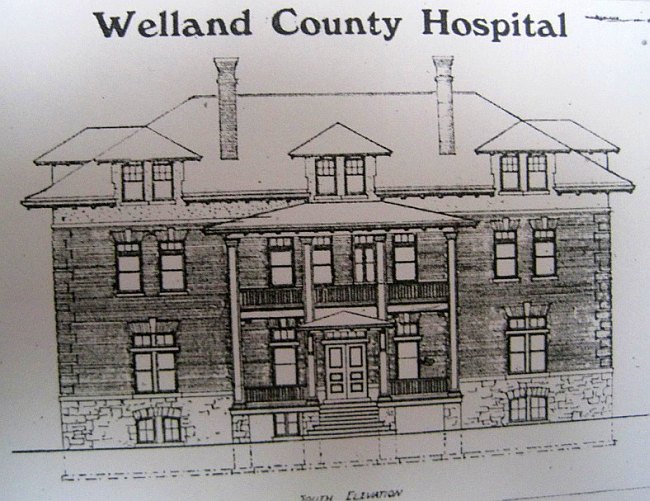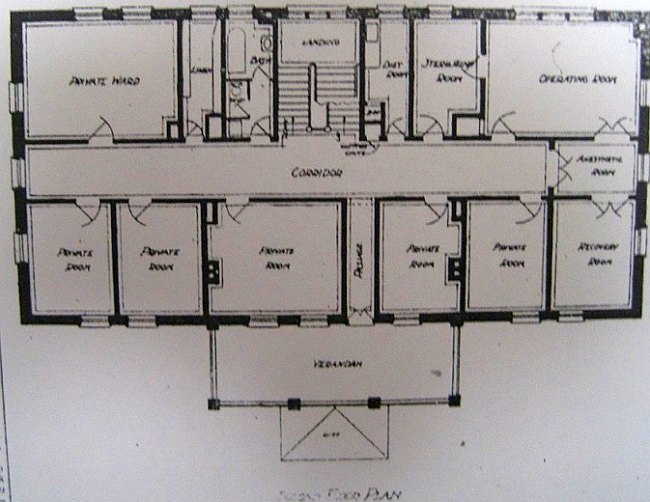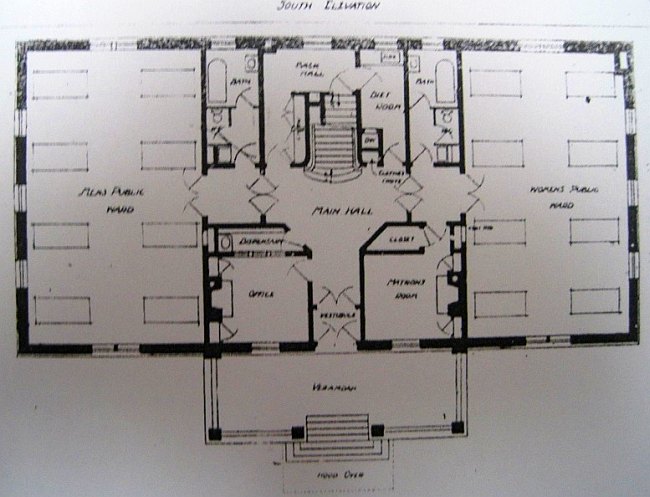WELLAND GENERAL HOSPITAL
WELLAND GENERAL HOSPITAL
As Necessary as it will be Attractive.
[Welland Tribune, 17 January 1908]

Work will be commenced on the Welland General Hospital early in March, if the weather permits. The cuts accompanying the sketch are self-explanatory. The building, as it is well-known, will be built on the south side of the river bank, west of the rectory. Here, and amid the most pleasant surroundings, and aided by all that science and medical skill can discover or suggest, the injured will be treated, and the sick tenderly hurried to health again. The south elevation shows a very attractive exterior, rising from a stone basement. The first two storeys will be of red brick, above which will be stucco work. Spacious windows will give plenty of light, and the dimensions of the south elevation will be 40×86 feet.
The basement will contain the store and furnace rooms, the janitor’s room and the laundry. The kitchen closets. While for point of designated, the staff dining-room will also be in the basement, also pantries and also distinguishing it from the other floors, the word basement is used, yet it is not so according to the usual interpretation of the word. The place will be bright and airy, and practically be a ground floor, opening out on the terrace of the river bank. There will be ten rooms in the basement.
The first floor plan is attractive. The entrance to the hospital will be made through an airy verandah. A wide vestibule will lead to the office on the left, and that of the matron on the right. There will be two wards on this floor, the men’s ward to the left, and that of the women across the main hall, and opposite. Each public ward will accommodate eight beds. Baths, diet and lunch rooms, with lavatories, complete the arrangements.
The sick who are on easy street will take the second floor. Here are four private rooms and two semi-private wards. The semi-private wards will have room for two or three beds each. This flat will have a fine verandah. Besides the private rooms and wards, on this storey, will be the operating room, and the anesthetic room adjoining. This room is where the patient is sent to the realm of peace, before going into the spot where the nurses tread softly, and where the knives are sharp and the doctors are dressed in white. A recovery room adjoins the anesthetic room, where, in sound-proof walls the agonies returning, the patient can moan and cry without disturbing the other sick, for it is a dismal sound to hear one coming to from out the anesthetic. A sterilizing room adjoins the operating rooms. There are, of course, the usual closets, and bath rooms on this floor.

The third floor is given up on one end for the servants, who have two large dormitories. The nurses in the opposite end of the hall have a bath room, a large sitting-room and three bedrooms. There is also an isolation room on this floor, in case any contagious disease should creep in unheralded and undiagnosed.
The height of the building from basement to uppermost ceiling will be 11 feet. It will have a metal roof, will be electric lighted and heated by hot water.
The board is comprised of the following well-known gentlemen: W.E. Phin, President; A. Griffiths, 1st Vice President; G.C. Brown, treasurer; Dr. Colbeck, secretary; W.M. German, M.P., Co. Raymond, the Mayor in office; the Warden of the County, M. McAuliffe, Donald Sharpe, Dr. Howell, A.B. Huttell, Charles Henderson, Donald McGillivray, Dr. Garner and A.O. Beatty.

 Subscribe..
Subscribe..
Add A Comment
You must be logged in to post a comment.